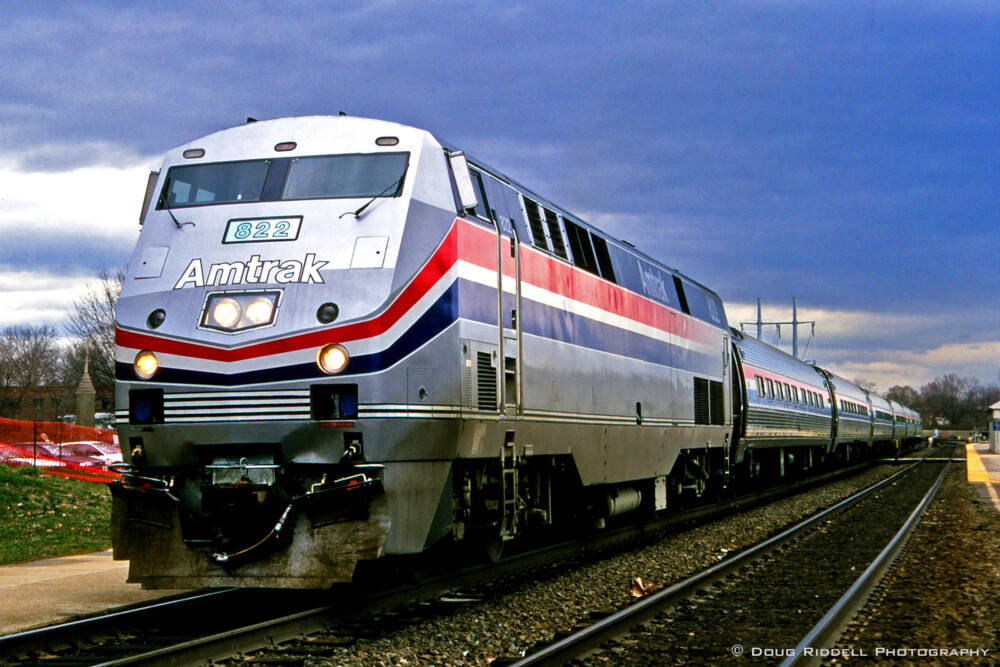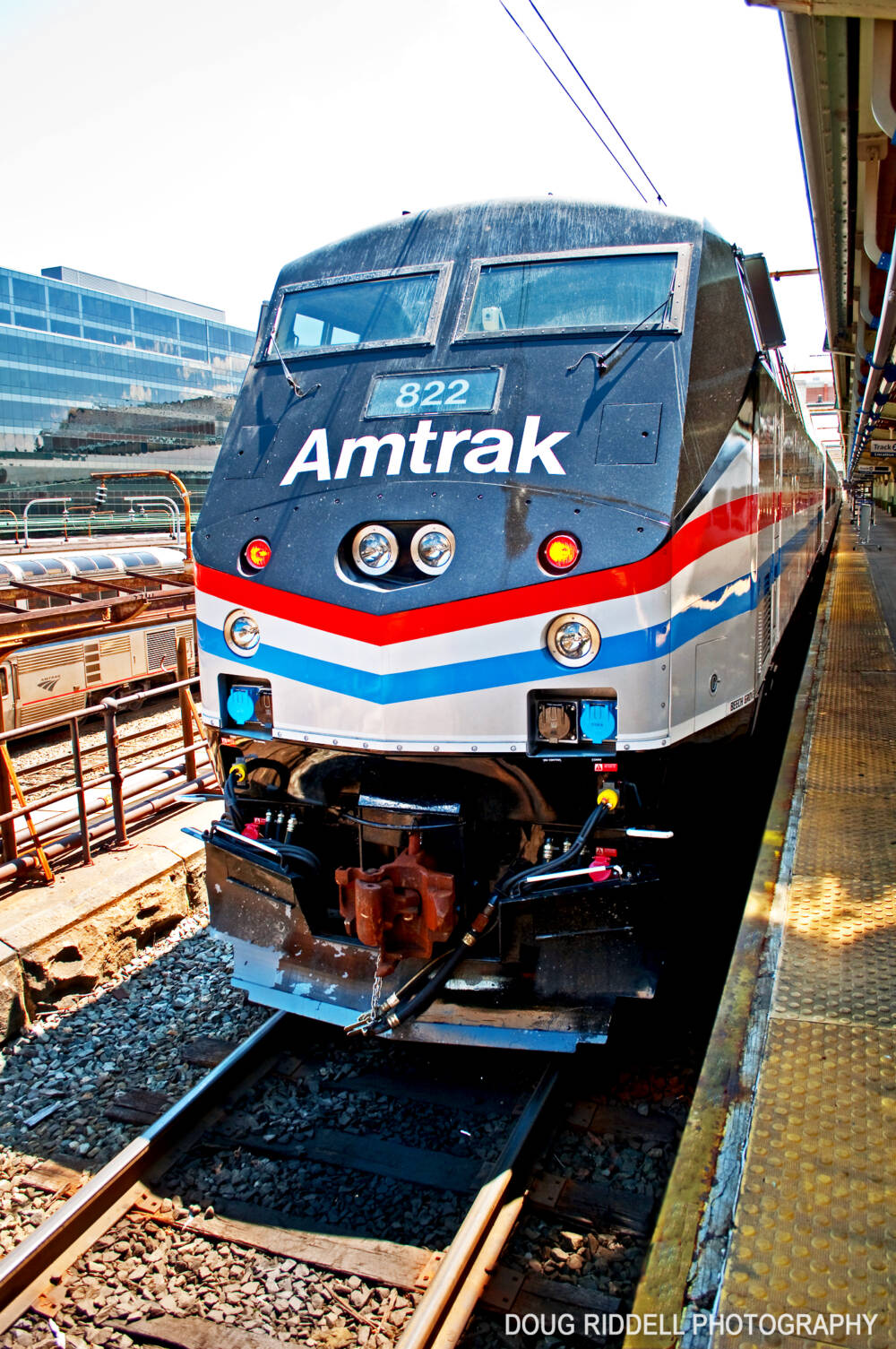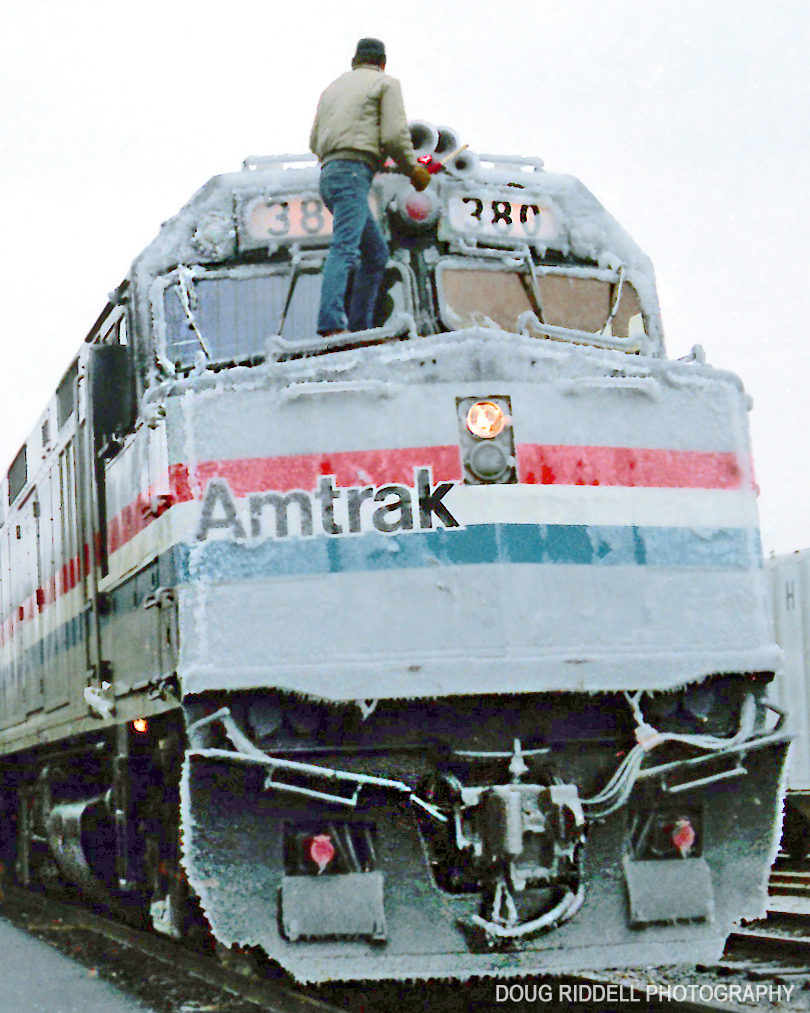
I saw the light, but changing the light was a whole different matter — and that’s why I’m skeptical when a locomotive builder claims to have consulted engineers when designing a new and improved model. And with good reason. They’re usually looking for product endorsement rather than any input intended for product development. A seasoned engineer eventually finds a way to adapt, but the learning process is frequently slow and aggravating.
My throttle-tugging brothers and sisters often complain, “We’re never asked what we need, or what makes good sense. They reinvent the wheel, based on what they think would work, and when it doesn’t, they’re totally dumbfounded.”
On the General Electric P40 and P42, it was something as simple as the headlight, without which, train movements are severely restricted, resulting in lengthy delays.
The Pyle twin sealed beam headlight mount, which holds two bulbs in place with bolts and hand-turned wing-nuts, has been the industry standard since the first Electro-Motive Division GP7s. It’s simple, practical, and foolproof. The designer at GE however, must have been a baseball fan, because when the new P40s and P42s left Erie, Pa., the front headlight bulbs were recessed in a “home plate” shaped hole, covered by a thick piece of clear plastic secured by several bolts. Removing the plastic cover required an expensive special tool. Other than at its own large terminals and shops, Amtrak relies on host freight railroads for emergency repairs, and out on the road those special tools were nowhere to be found. Additionally, the angle of the sloped engine nose required a tall step ladder to access the headlight assembly.

Thus, imagine my surprise a couple of years later, when I first noticed something radically different approaching my P42 (fresh in its new blue paint scheme) at Washington Union Station. The headlight had been retrofitted with an oval opening — no cover plate — just as they appear now, nearing retirement.
I was reminded of a trip leaving Raleigh, N.C., on the northbound Silver Star, led by two F40s, after idling for two days, following a crippling winter ice storm. Passengers had been forwarded by whatever means were available, so the coaches were empty, except for a group of Amish travelers, returning to Lancaster, via Philadelphia. On being told apologetically no food would be available until Richmond, an elder replied, “We will do just fine. We require little. We can make do, sir,” an elder said.
The trip went well until we hit a thick pine tree lying across the right of way, at dusk, in Virginia. As my fireman and I dove for the floor, with the brakes in emergency, the collision took out our headlights. Discovering the spare bulbs had already been used, I instructed my fireman to get the two sealed beams from the rear end. I climbed up on the nose of the engine, and replaced the two broken bulbs, laying flat on my stomach, and in just 15 minutes, we were on our way.
“That’s amazing, Mr. Riddell. How’d you think of that?” my fireman asked.
Paraphrasing our passengers, “Good locomotive engineers can do just fine. We require little except properly designed tools. We can make do.”

If you enjoyed this “From the cab” installment, you might enjoy reading Doug Riddell’s memories of running streamlined E8 locomotives.














When I was a trainmaster on Penn Central at a location that had no car department or engine house people on 3rd trick I changed a sealed beam headlight on an EMD GP7. It was a relative easy job just requiring a Phillips head screw driver. The crew could continue to work and I was not timeslipped!
Field repairs, if you are lucky enough to have parts and…tools!